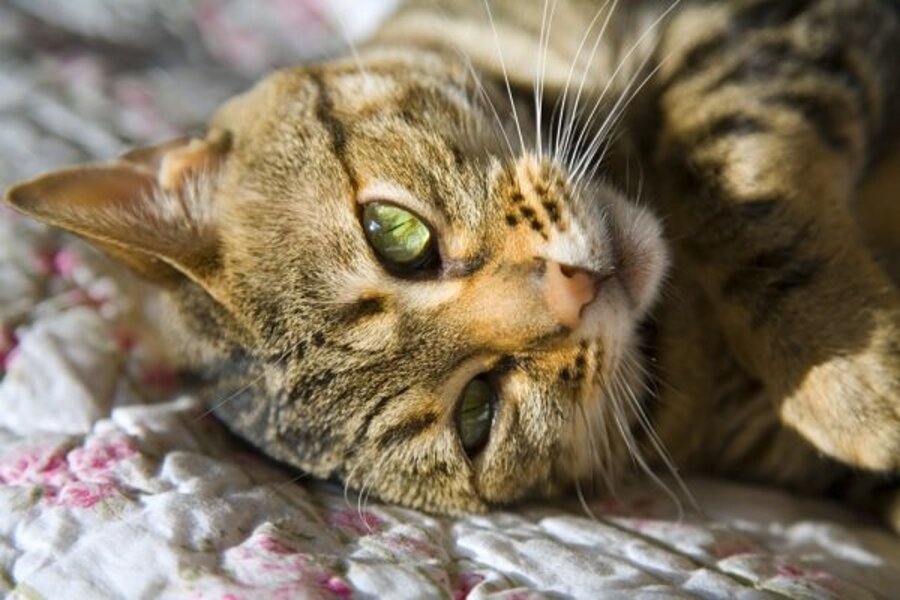Cats mix a cry and a purr to score a meal
Loading...
House-cat behavior doesn't exactly draw the big research bucks. Sometimes it takes an observant scientist watching his or her "I've got your number" pet to ask the question: What's that feline's secret for pushing my buttons? In this case, the "feed me" button.
Enter Karen McComb, a behavioral ecologist at the University of Sussex in Britain. She and colleagues in Britain and the US have found that when cats are angling for a meal, they tend to blend purring and crying in a way that prompts us humans to grab the cat-food can, can opener and bowl to silence the sound.
This blend, which she and her colleagues dub "solicitation purring," is easier on the human ear than outright meowing, "which is likely to get cats ejected from the bedroom," Dr. McComb explains.
You can read a summary of the formal paper at Current Biology's site. You can read a plain-English version here.
How did McComb and her colleagues zero in on this particular question?
Well, she's been studying animal communication for years. And, she explains, she gets that kind of wake-up call from her cat. Similar tales emerged as she swapped pet stories with other cat owners.
So she and her team found some cat-owning volunteers, taught them to use sound recorders, then had them record their pets' purrs.
The team gathered up 50 volunteers and subjected them to each type of purr --normal and "solicitation." The team replayed both types at the same volume. The volunteers "consistently selected the solicitation purr as the more urgent," the scientists report. It didn't matter whether the volunteers were cat owners or not.
The team then built a spectrum of each type of purr by identifying the range of pitches, or frequencies, the purrs contained and how loud each one was compared with its neighbors. In other words, how loud was the "do," compared with the "re" and "mi?"
How low can you go?
They found that normal purring, which cats generate by activating muscles that make up their vocal cords, has a strong low-frequency component at around 27 cycles per second, or 27 Hertz (Hz). That's close to the bottom of the range of human hearing.
Mixed in, however, was another pitch, which averaged around 380 Hz -- within the range of the cry of a healthy human baby. It was formed by the cats moving air through their vocal cords, rather than by muscle activation alone. But this component was pretty weak.
During the solicitation purr, however, this higher-pitched component became far more pronounced.
To be sure, all cats do not purr equally. This "feed me" tool seems to crop up most frequently with cats owned by singles, rather than those who live in homes with lots of people. Too many folks for the cat to effectively train, perhaps.
While the "feed me" purr certainly lacks the urgency of a crying baby, the team concludes that it contains just enough of the humanly familiar to make the well-trained (by the cat) cat owner take notice.
Update on July 16, 2009:
To find out what the solicitation purrs sound like and how they compare with standard purrs, you can find samples here.





